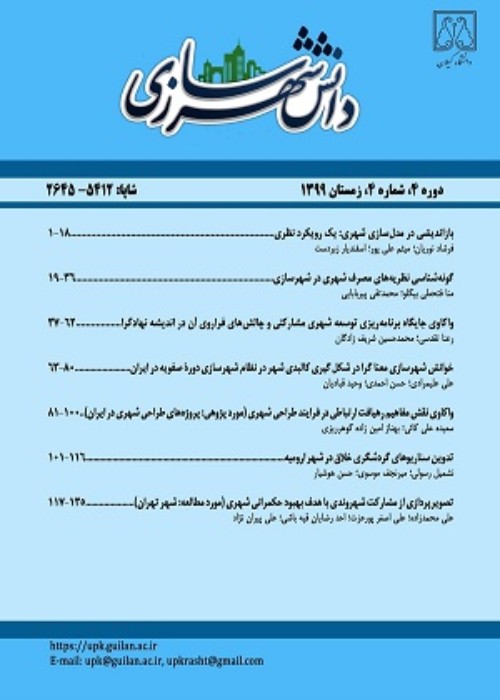A New Approach in Urban Development Based on the Right to the City Approach
As mentioned in many urban studies, contemporary cities are facing many problems and challenges. Lefebvre was one of the first to reveal the essential role of urban development in general and urban space production in particular in the reproduction of capitalist relations as the main issue of cities. According to him, this role went far beyond the simple production of urban space as a tradable commodity in the market. He argued that capitalism in the 20th century survived not only by organizing production in space but also by organizing the production of space itself. Therefore, Lefebvre proposed the right to the city as a socio-spatial concept and a call to create a livable and just city; however, as Marcuse has stated, it is not clear what this city will look like in the end. The right to the city in urban development requires creating codes and redefining concepts in order to improve cities' conditions. In this article, we seek to draw a framework for urban development by exploring the concept of the ri g ht to the city , acity that lefebvre refers to asa work of art .
The current research is of a qualitative type, and the qualitative content analysis method was used to draw a framework for the conceptual expansion of urban development from the perspective of the theory of the right to the city. The source of data collection is documents and a purposeful sampling method was used to collect data. Reaching the theoretical saturation to achieve the goal of the research was achieved by examining the number of 155 cases. The research coding system includes the theme, category, subcategory, and sign or code, which draws categories or conceptual maps in a comparative approach in a systematic way.
The results show that the right of possession, the right to participation, and the right to difference form the three economic, political, and social necessities of urban development, respectively. The right to possession consists of two categories of the social function of real estate and land and the right to fair spatial distribution. Also, the right to urban citizenship, democratic participation, and democratic governance are the main categories of the right to participation. Finally, the right to difference is the symbolic dimension of urban development, which includes the categories of socio-spatial priority, environmental justice, diverse and lively urban space, and the right to creativity. These categories guarantee spatial justice, democracy, and vitality in urban development. From the perspective of the right to the city, spatial justice in urban development includes fair distribution of urban resources and services (substantive justice), respect for the environment and urban communities (diagnostic justice), and fair structure and processes in decision-making (procedural justice). Achieving spatial justice from the point of view of the right to the city cannot be achieved except by linking people with the city space. This concept implies Lefebvre's insistence on the central role of residents. This requires having the right to urban citizenship, democratic participation in the production of space, and democratic governance in the transformation of the city space. Also, Lefebvre searches for urban vitality in the lived experience of city residents and mentions it as one of the three aspects of urban development, where social relations and practices are mediated through it.
The concept of the right to the city does not include separate and multiple rights but is defined in a relational way. Here, we define the three concepts of the right to occupy the space, the right to participate in the production of space, and the right to difference as concepts arising from the right to the city in urban development, which includes the substantive, procedural, and diagnostic dimensions, respectively. The model of urban development based on the right to the city expands a set of concepts and tools for fundamental changes in the city space, which provides the possibility of collective ownership and production of space by residents based on the value of its use. To achieve this principle, citizens should demand spatial justice, urban democracy, and urban vitality from the concepts of right of possession, right to participation, and right to difference. Therefore, the right to the city does not include separate and multiple rights but is defined in a relational way. This right has substantive dimensions (right to possession), procedural (right to participation), and diagnosis (right to difference). Although it refers to different parts, it is completely intertwined and the right is a triple whole, not a set of individual and separate rights.
- حق عضویت دریافتی صرف حمایت از نشریات عضو و نگهداری، تکمیل و توسعه مگیران میشود.
- پرداخت حق اشتراک و دانلود مقالات اجازه بازنشر آن در سایر رسانههای چاپی و دیجیتال را به کاربر نمیدهد.



